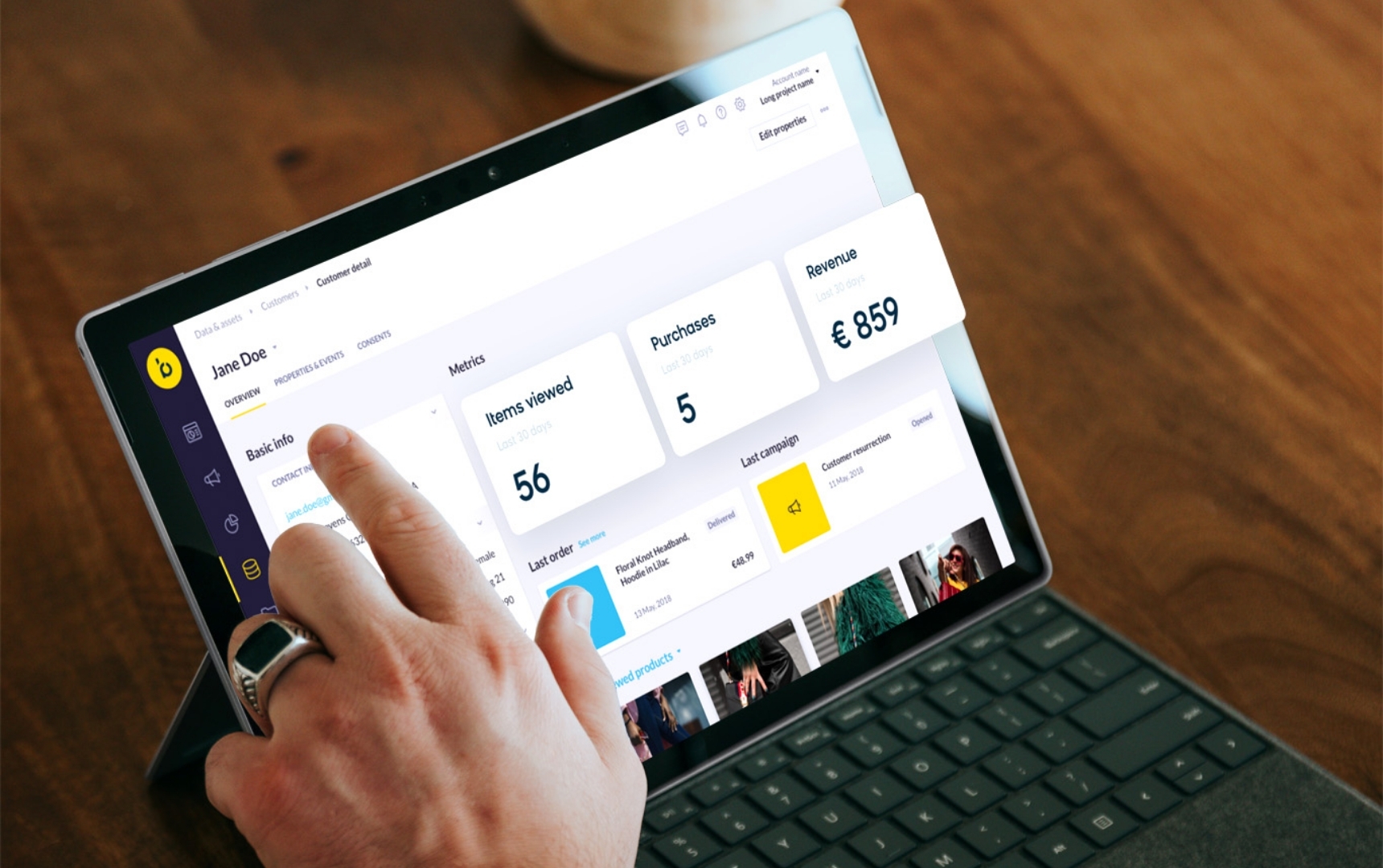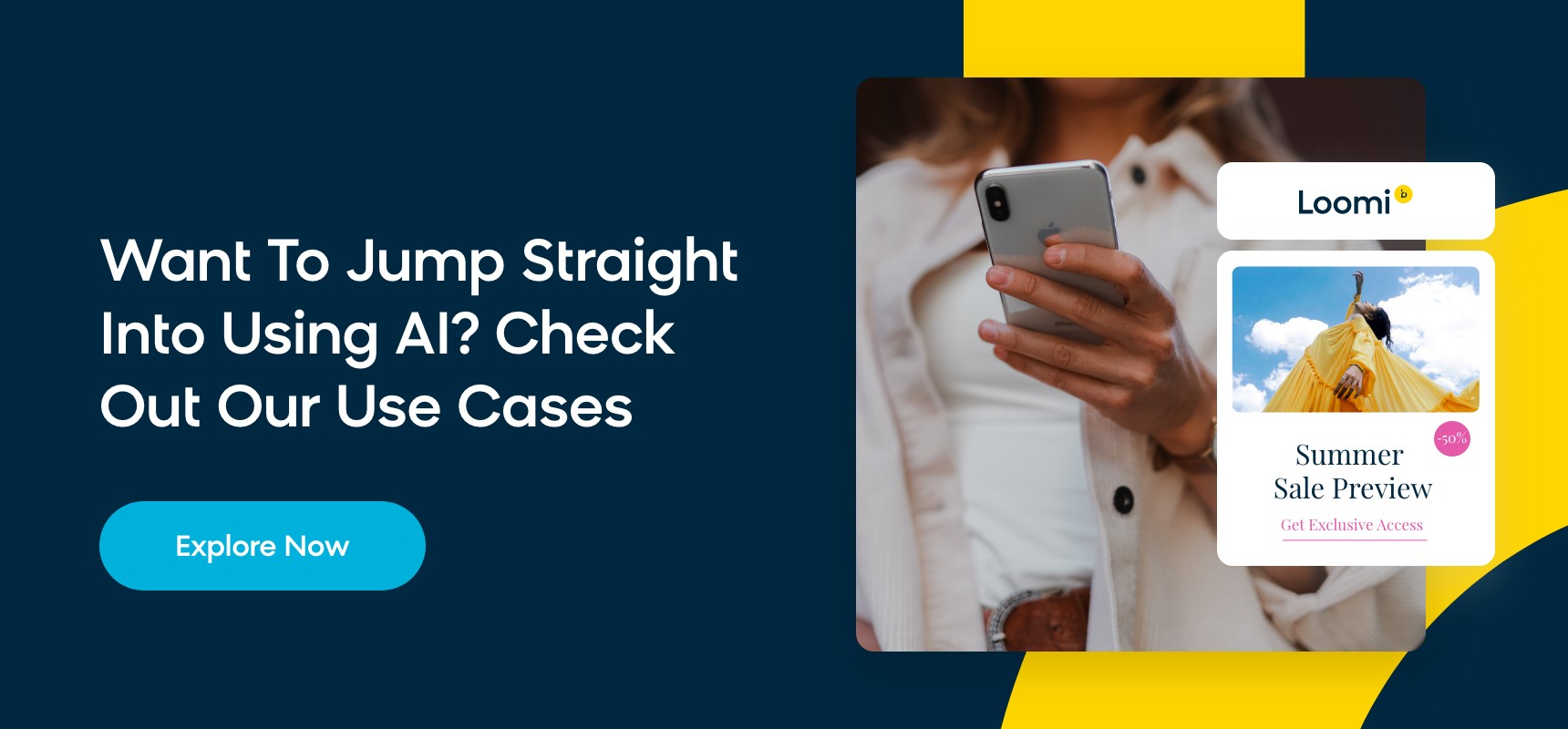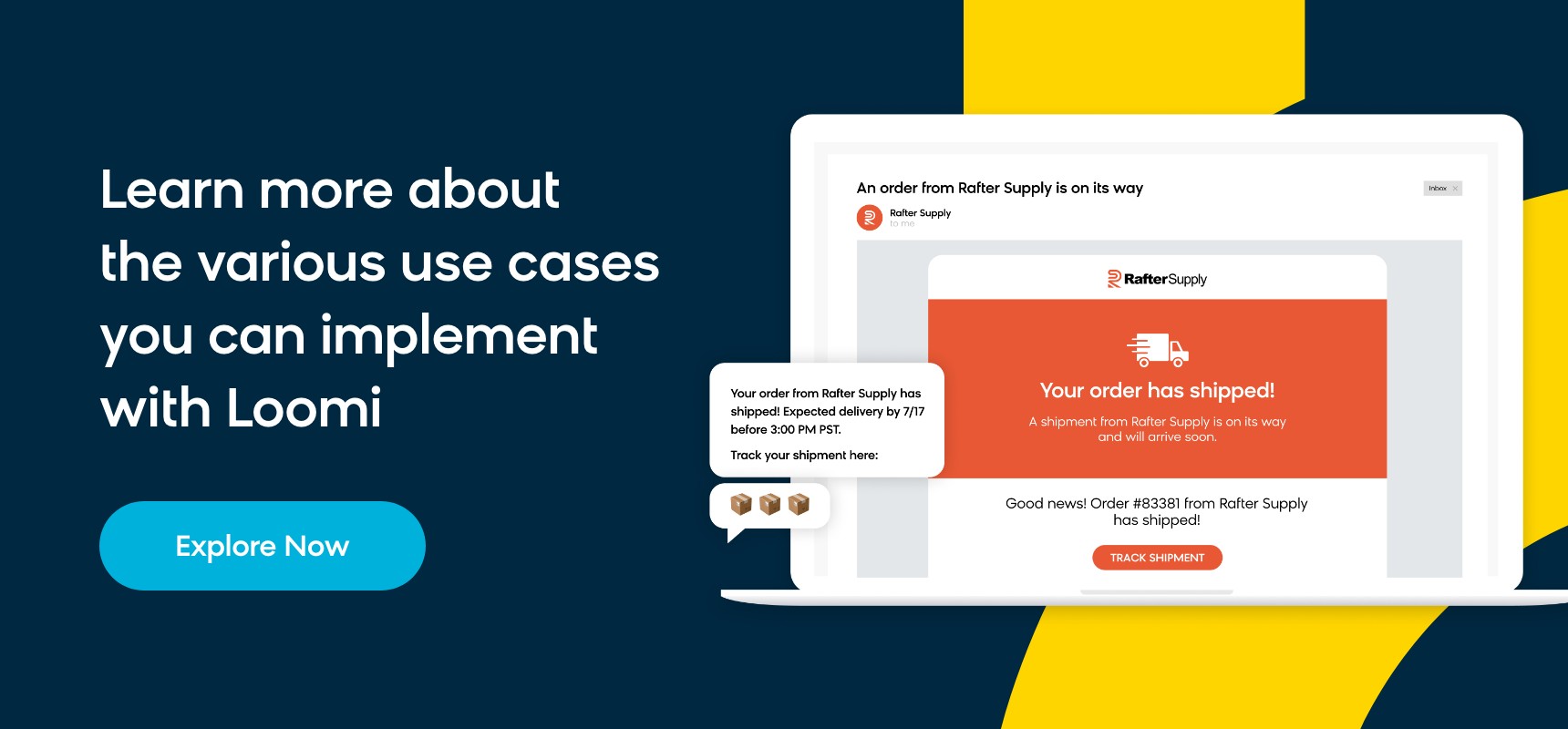AI Personalization: 5 Examples + Business Challenges
By Michael Lee
08/31/2023

Personalized customer experiences have become the basis for competitive advantage. However, it’s not as simple as just using a first name on an email. Consumers expect organizations to deliver personalized interactions and over three-quarters (76%) get frustrated when this doesn’t happen.
Delivering a personalized experience requires every physical and virtual touch point to be designed to speak directly to an individual. But it can be incredibly challenging to achieve that at scale. That’s why over 9 in 10 (92%) organizations are looking at AI for personalization — it connects customers with what they really want, which creates endless new paths to purchase, greater profitability, and fast business growth.
What Is AI Personalization?
AI personalization uses a customer’s demographic and past behavioral data — such as browsing and purchasing history, as well as social media interactions — to learn about the specific needs and preferences of that individual. Using this insight, the technology can predict what they may be interested in to make product recommendations in real time.
An example of AI personalization is when an ecommerce website includes a “Customers also bought” section to encourage shoppers to add more items to their cart. It’s becoming increasingly essential to brands because it enables them to customize their interactions at scale, which boosts customer engagement, conversion rates, and revenue.
What Is Hyper-Personalization?
Hyper-personalization takes the AI customer experience one stage further to allow an organization to engage with its customers on a one-to-one basis. From a marketing perspective, the message, content, offers, and product recommendations are all customized for an individual.
According to research from McKinsey, fast-growing organizations gain 40% more revenue from hyper-personalization when compared to slower-growing competitors. This is because they’re using the intelligence gained from their data to know how to fulfill a specific customer need at a specific moment.
How AI Can Improve Customer Experience
The majority (82%) of organizations use AI personalization to improve the customer experience and are rewarded with five to eight times the return on marketing spend. It’s the smart choice because it enables organizations to identify the small details that make customers feel valued and understood, and uses them at scale to increase revenue and decrease churn.
Personalized Product Recommendations
When customers make a first-time purchase, two-thirds (67%) value relevant product recommendations as the most important factor when deciding whether or not to check out.
In a hyper-competitive and noisy market, AI personalization makes it possible to collate and analyze vast quantities of historical data to make relevant recommendations in real time. For example, cosmetics and beauty brand Yves Rocher increased purchase rate by 11x compared to a top-seller recommendation.
AI-Powered Chatbots
If customers encounter issues or have questions while browsing your site, you need a scalable way to help them out. Traditional chatbots were a somewhat functional solution, but generated a lot of their own issues since they were confined to preprogrammed, rules-based answers. Fortunately, AI has started to address a lot of the frustrations people had with chatbots. Able to understand customer queries and recall past conversations, AI-powered chatbots can mimic human conversation to optimize the online experience.

The Thinking Traveller has been voted the top villa rental company in the world five years in a row. It’s an organization that understands the importance of delivering an outstanding customer experience, which is why it uses web optimization tools as a core part of its online strategy. The result: a 33% increase in online bookings.
Personalized Website Content
AI personalization isn’t just great for first-time buyers; 78% of customers say it’s more likely to make them repurchase because they feel the organization knows them better. It’s because of AI personalization that organizations are able to show their customers the content they want to see when they want to see it. When used in a web personalization strategy, it allows marketers to evolve their campaigns beyond targeting broad demographics to executing individual experiences.
For example, HP Tronic is a leader in the consumer electronics and household appliances market in the Czech Republic and Slovakia. By using AI to help personalize its website content, it increased its conversion rate for new customers by 136%.
Personalized Email Content
Of the organizations that have adopted AI for personalization, 87% use it to improve their email marketing. Organizations need better email marketing campaigns to avoid their messages being labeled as spam and their domains being blacklisted.
From the first welcome email to post-purchase sequences, contextual communications ensure the right message is sent to the right person at the right time. UK furniture retailer DFS is one company to take advantage of AI personalization in its email marketing. By triggering the next message in a sequence based on the last customer action taken, it increased conversions by 4.2% and revenue by 3.9%.

Personalized Ad Targeting
Every day, the average person sees between 4,000-10,000 ads, which means for an ad to be remembered or acted upon, it must stand out. AI allows organizations to create personalized ads in near real time by using key demographic and behavioral data — including a person’s social posts, comments, likes, and shares. Before AI, this simply wasn’t possible.
Rapha Racing operates in a competitive market, making cycling clothing. To stand out, it implemented personalized ad targeting from Bloomreach Engagement in just one hour, which immediately delivered greater insight into marketing spend and led to a 31% increase in purchase events seen in Facebook Ads Manager.
AI Personalization Challenges
The market is booming with many companies already spending more than half their budgets on AI personalization. However, there are still several challenges organizations must be mindful of to ensure they use it to the best effect.
Defining User Segments
Every marketer has the importance of customer segmentation drilled into them because it makes their organization 60% more likely to understand their customers’ challenges and 130% more likely to know their intentions. But securing agreement on how the organization defines its target market is tough because it’s possible to segment a market in several ways, such as by demographics, geography, psychographics, behavior, needs, and values.
One of the most effective ways to approach segmentation is the creation of customer personas. Defining the segment via a person, rather than a bullet point list of attributes, makes it easier to communicate across the business — and keep that persona front of mind when making decisions.

Data Privacy
Despite strict regulations like the GDPR, only 51% of customers trust organizations to keep their personal data secure and use it responsibly. Clearly, there remains a disconnect between organizational enthusiasm for AI and customer confidence in how it’s being used.
When adopting AI personalization, organizations must prioritize transparency. Clear privacy policies that explain what customer data is collected and how it is used to deliver a personalized experience will help restore customer confidence.
Striking a Balance With Customer Sentiment
When using AI for personalization there’s a fine line between delivering results that are useful, and those that border on creepy. For example, there are several documented campaigns where emails have been sent to congratulate women on their pregnancies when there was no way the organization should have known — in some cases, the women didn’t know themselves. Here, AI personalization has gone too far because the data has been used in a way that feels intrusive.
Just because an organization has access to certain data or can draw conclusions based on what that data says, that doesn’t mean it should be used. Organizations should always think about what data their customers expect them to have and refine campaigns based on customer feedback (or better yet, drive campaigns using zero-party data).

Costs and Resources for Implementation
According to Gartner, the number one challenge marketers face when executing their digital strategies is how to leverage integrated customer data to drive campaign execution. In particular, a lack of alignment between internal teams can lead to campaign efforts being pulled in different directions.
Implementing a unified AI personalization strategy can be costly, particularly for smaller businesses with limited resources. Therefore, to ensure the best ROI, an organization must communicate its intentions clearly from the start — beginning with defining user segments.
Use AI Personalization for a Competitive Advantage
Bloomreach Engagement is designed to help organizations create relevant experiences for each customer and buyer at every stage of the shopping journey. We accomplish this with Loomi, a powerful AI that brings real-time personalization to all channels, so you can reach your customers with the right message at the exact right time.
Now’s the time to use AI personalization effectively in your organization. Learn more about the various use cases you can implement with Loomi.
Found this useful? Subscribe to our newsletter or share it.









